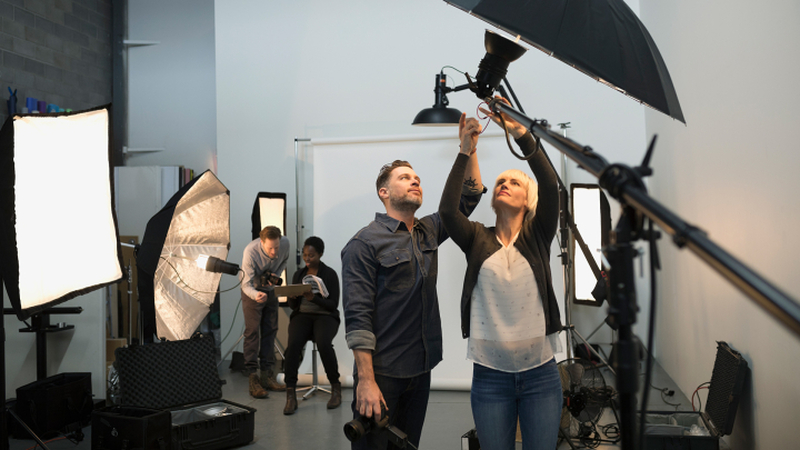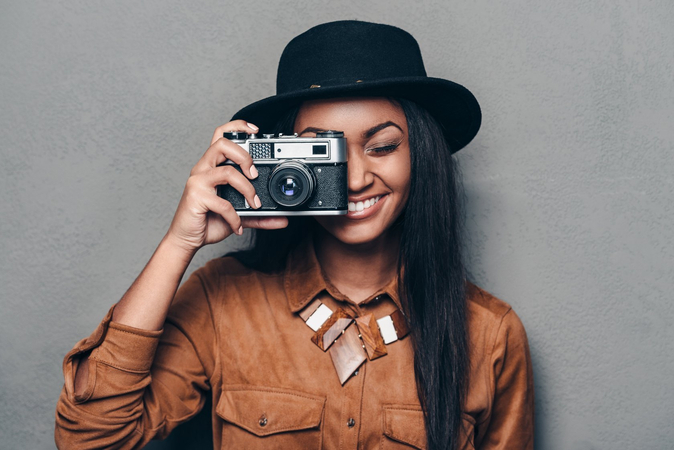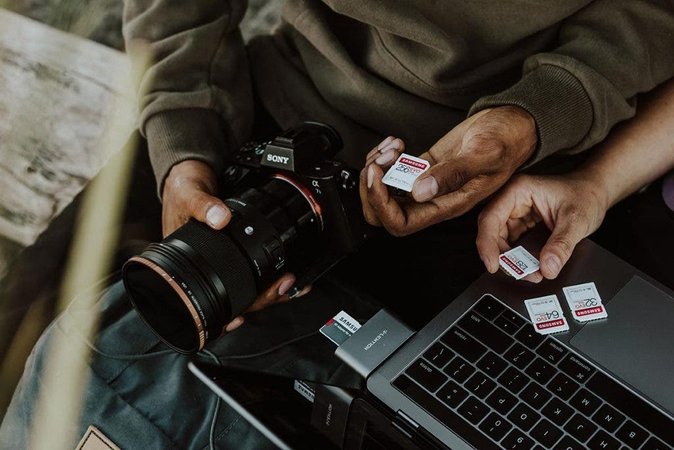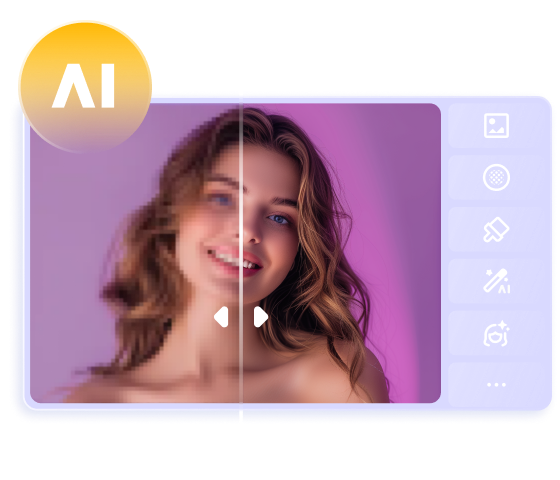A Complete Guide to Becoming a Photographer Without a Degree
How to become a photographer without a degree is a question asked by thousands of aspiring artists every day, and for good reason. In today's digital age, becoming a professional photographer is no longer limited to those who spend years in photography school or pursue expensive academic degrees. Many of the world's most successful photographers are self-taught, proving that what truly matters is passion, practice, and perseverance.
Formal education can be helpful, but it is by no means a requirement. The beauty of photography lies in its accessibility-anyone with a camera and the drive to improve can learn, grow, and even make a living from it. If you're someone who dreams of expressing creativity through images but wonders where to begin or doubts your abilities due to a lack of credentials, this guide is here to walk you through the exact steps to turn your dream into reality.
Part 1: Understanding the Basics of Photography
Photography is an art and science that involves capturing light to create images. Here's a breakdown of the essential concepts:

Technical Foundations
Exposure and the Exposure Triangle
The exposure triangle consists of three key elements that determine the exposure of an image:
1. Aperture:
- Controls the amount of light entering the camera.
- Measured in f-stops (e.g., f/2.8, f/5.6).
- A lower f-stop means a wider aperture, allowing more light and a shallower depth of field.
2. Shutter Speed:
- Determines how long the camera's sensor is exposed to light.
- Measured in seconds or fractions of a second (e.g., 1/1000s, 1s).
- Faster shutter speeds freeze motion, while slower speeds create motion blur.
3. ISO:
- Measures the sensitivity of the camera's sensor to light.
- Lower ISO values (e.g., 100) are used in bright conditions, while higher values (e.g., 3200) are used in low light.
- Higher ISO can introduce noise (graininess) into images.
Camera Modes
Understanding different camera modes can help you control exposure effectively:
- Program Mode (P): The camera automatically selects aperture and shutter speed, but you can adjust other settings.
- Aperture Priority Mode (Av or A): You set the aperture, and the camera chooses the appropriate shutter speed.
- Shutter Priority Mode (Tv or S): You set the shutter speed, and the camera selects the aperture.
- Manual Mode (M): You have full control over both aperture and shutter speed.
Metering Techniques
Metering helps you determine the correct exposure by measuring light. Common metering modes include:
- Matrix/Evaluative Metering: Analyzes the entire frame for balanced exposure.
- Center-weighted Metering: Prioritizes the central area of the frame.
- Spot Metering: Measures a small area for precise exposure control.
Compositional Techniques
- Rule of Thirds-Divide the frame into a 3x3 grid. Place key subjects along the grid lines or their intersections to create a balanced composition.
- Leading Lines- Use natural lines in the scene (like roads, paths, or bridges) to lead the viewer's eye toward the main subject.
- Framing and Patterns- Frame your subject using elements in the scene (like trees or windows) to create depth. Look for repeating patterns to add interest.
- Symmetry- Utilize symmetrical elements to create a sense of balance and harmony in your composition.
Part 2: Finding Your Niche in Photography
Exploring different photography genres can help you discover your passion. Here's an overview of various niches:
1. Portrait Photography
- Focus: Capturing the personality and mood of individuals or groups.
- Techniques: Use natural light, controlled backgrounds, and techniques to enhance expressions.
- Common Styles: Studio, environmental, candid.
2. Pet Photography
- Focus: Capturing the unique personalities of pets.
- Techniques: Use toys and treats to get pets' attention; consider the setting for their comfort.
- Common Styles: Action shots, posed portraits, lifestyle.
3. Still Life Photography
- Focus: Depicting inanimate objects in a visually appealing way.
- Techniques: Pay attention to lighting, composition, and background to create mood and interest.
- Common Subjects: Flowers, food, everyday objects.
4. Underwater Photography
- Focus: Capturing images beneath the water's surface.
- Techniques: Use waterproof gear, manage buoyancy, and consider lighting conditions.
- Common Subjects: Marine life, underwater landscapes, divers.
5. Other Niches
- Food Photography: Showcase dishes in an appealing way, focusing on lighting and composition to highlight textures and colors.
- Wedding Photography: Capture the emotions and moments of a wedding day, often requiring a blend of portrait, candid, and event photography.
- Travel Photography: Document experiences and cultures while focusing on landscapes, people, and local life.
- Architectural Photography: Highlight buildings and structures, emphasizing lines, shapes, and the relationship between spaces.
Part 3: Building Your Skills Without Formal Education

Self-Learning Resources for Photography
We are living in an age rich with educational resources, making it easier than ever for beginners to learn photography. Here are some key options:
- Online Platforms: Websites like Skillshare, MasterClass, and Coursera offer structured courses. YouTube and photography blogs provide a wealth of free tutorials.
- Podcasts: Great for gaining insights during commutes, featuring tips from influential photographers.
- eBooks and Guides: Useful for reinforcing techniques and theory.
For those wondering how to become a photographer at home, these resources allow for flexible, paced learning. Regular application of learned skills is essential for development.
Hands-On Experience
Practical experience is crucial for growth. Here are some suggestions:
- Daily Practice: Take photos of everyday subjects-your room, pets, meals.
- Volunteer: Offer free sessions to friends and family to build confidence.
- Assist Professionals: Work with experienced photographers to learn about client management and shooting in different environments.
Consistent practice and small projects help refine your skills and creativity.
Part 4: Creating a Strong Photography Portfolio
A well-curated portfolio is one of the most important assets you can build. Whether physical or digital, it reflects your style, skills, and potential. Start by selecting your best work-images that are sharp, well-composed, and emotionally engaging. Group them by category or style to show range and consistency. Your portfolio should be a story, not a random assortment of photos.
Online portfolios are a must in the digital era. Platforms like Squarespace or Adobe Portfolio allow for clean, mobile-friendly designs. Instagram can serve as an informal portfolio too. If you're sharing images online, remember to optimize them for fast loading and clarity. Avoid clutter, and make it easy for potential clients to contact you. Keep refining your portfolio as your work evolves.
Part 5: Establishing Your Photography Business

Business Structure
Starting a business may seem daunting, but it's a crucial step if you're serious about turning your passion into income. Decide whether you want to remain a sole proprietor or form an LLC. While a sole proprietorship is simpler and cheaper, forming an LLC provides better legal protection and often enhances credibility. You'll also need to track income and expenses, register your business (if required), and consider getting insurance for your gear.
Pricing Your Services
Setting the right price involves understanding your costs, the market rate, and the value of your time. Don't just charge for the hour you shoot-consider editing time, travel, equipment wear and tear, and client consultations. Create packages that cater to different budgets, with clear deliverables. Transparent pricing builds trust and helps clients understand what they're paying for. Avoid undervaluing yourself just to attract business. Price with confidence, and revise as you gain experience.
Client Contracts and Protection
Professionalism means using contracts, even for small jobs. A clear agreement outlines the scope of work, payment schedule, delivery timeline, and copyright terms. It protects both you and the client and minimizes misunderstandings. Templates are widely available online, but customizing them to fit your services is key. Use contracts for every shoot-it's not just about legality; it shows you take your work seriously.
Part 6: Marketing Yourself Effectively
Marketing is what turns skill into opportunity. Start with a website that includes your portfolio, about page, testimonials, and a contact form. SEO (Search Engine Optimization) ensures potential clients find you when they search online. Use social media platforms-especially Instagram, Pinterest, and Facebook-to share your work and build a community. Consistency matters more than perfection.
Email marketing, blogging, and networking events also help expand your reach. Always encourage clients to leave reviews and refer others. Good marketing doesn't require a big budget, just strategy and consistency. Show your work, tell your story, and make it easy for people to find and hire you.
Part 7: Ongoing Learning and Improvement
Photography is constantly evolving, making ongoing learning essential. Stay curious by following photography blogs and industry leaders, and attend webinars or workshops. Experiment with new techniques, even if they don't fit your current style, and seek feedback by joining critique groups or asking mentors for input. Remember, growth is a lifelong journey.

A great tool to aid your development is HitPaw Photo Enhancer. This AI-powered software enhances image quality by upscaling and improving details without losing clarity. It's perfect for beginners wanting professional results quickly. Embrace learning and utilize helpful tools to elevate your photography skills.
Part 8: Conclusion
You don't need a diploma to call yourself a photographer. What you need is passion, effort, and the drive to keep improving. Whether you're shooting with a phone or a DSLR, learning online or from experience, the path is yours to define. From understanding gear to building a business, every step brings you closer to your goal. Start small, grow steadily, and never stop creating. Now is the perfect time to begin.
Part 9: FAQs
Q1. Can you be a self-taught photographer?
A1. Yes. Many professionals are self-taught through online resources and consistent practice.
Q2. What qualifications do I need to be a photographer?
A2. None. A strong portfolio and professionalism matter more than formal credentials.
Q3. Is it hard to learn photography?
A3. It takes dedication, but with modern tools and resources, anyone can learn and grow.
Q4. Can I be a freelance photographer?
A4. Absolutely. Freelancing offers flexibility and control over your work and schedule.
Q5. Is photographer a good career?
A5. Yes, especially if you're creative and disciplined. It offers both artistic and financial rewards.










 HitPaw Univd (Video Converter)
HitPaw Univd (Video Converter) HitPaw VoicePea
HitPaw VoicePea  HitPaw VikPea (Video Enhancer)
HitPaw VikPea (Video Enhancer)



Share this article:
Select the product rating:
Daniel Walker
Editor-in-Chief
This post was written by Editor Daniel Walker whose passion lies in bridging the gap between cutting-edge technology and everyday creativity. The content he created inspires the audience to embrace digital tools confidently.
View all ArticlesLeave a Comment
Create your review for HitPaw articles